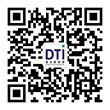German LFGB certification process for juicer blade cup
Date:2025-07-25 09:36:06 Classification
:【question】 Visits:
The core process and key points of the German LFGB certification for the juicer blade cup are integrated from EU regulatory requirements and practical experience:
I. Confirmation of certification applicability
1. Mandatory scope
- As a component that directly contacts food, the blade cup falls within the control scope of Article 30/31 of the LFGB Regulation (German "Food and Daily Necessities Law") and must pass the test before entering the EU market.
- Core testing: heavy metal dissolution (lead, cadmium, etc.), chemical migration (such as plasticizers), sensory testing (odor migration).
II. Processing process (5 steps)
Step 1: Material and sample preparation
- Required documents:
- Product technical drawings (marking the material and contact surface of the blade cup);
- Ingredient declaration (metal type, plastic model such as PP/TRITAN, etc.);
- MSDS report of the raw material supplier
- Sample requirements:
- Provide 2-3 sets of unused knife cups (including packaging)
Step 2: Selection of test items
Match test items according to materials (focus on juicer characteristics):
Material type | Test items
| Metal knife head: heavy metal dissolution (lead, cadmium, chromium, nickel); wear resistance test (simulation of long-term use)
| Plastic/glass cup body: comprehensive migration test (3% acetic acid simulates acidic juice), formaldehyde release, sensory odor evaluation
| Silicone sealing ring: volatile organic matter (VOM), peroxide value
> Note: If the knife cup contains a coating (such as a non-stick layer), PFOA perfluorinated compounds and coating adhesion must be tested.
Step 3: Submission and laboratory testing
- Recommended institutions:
- Choose a third-party laboratory with CNAS qualifications (such as Dezewei Testing).
- Cycle:
- Regular 5-7 working days, expedited can be shortened to 3 days (cost +30%~50%).
Step 4: Report review focus
- Check whether the migration limit meets the latest standards (such as lead ≤ 0.01mg/dm2);
- Verify whether the label contains German/English warnings (e.g. "Do not grind hard ingredients").
Step 5: Obtain certificates and logos
- After passing the LFGB test report, you can add the "knife and fork logo" to the knife cup packaging;
- The report must include multi-language versions (required for export).
III. Key points
1. Cost optimization
- Basic cost: 800~1500 yuan (plastic + metal composite material is higher);
- Series testing: knife cups of the same material but different capacities can be combined for inspection to reduce costs.
2. Compliance risks
- Concealing the coating ingredients (such as PFOA) will lead to product recall;
- Material changes require retesting within 15 days.
3. Technical traps
- The stainless steel blade head must be marked with the brand (such as 304/316L) to avoid excessive chromium dissolution;
- Avoid using recycled materials for plastic cup bodies (which may cause excessive migration substances).




 Shen Gongwang Security: 44030602006947
Shen Gongwang Security: 44030602006947